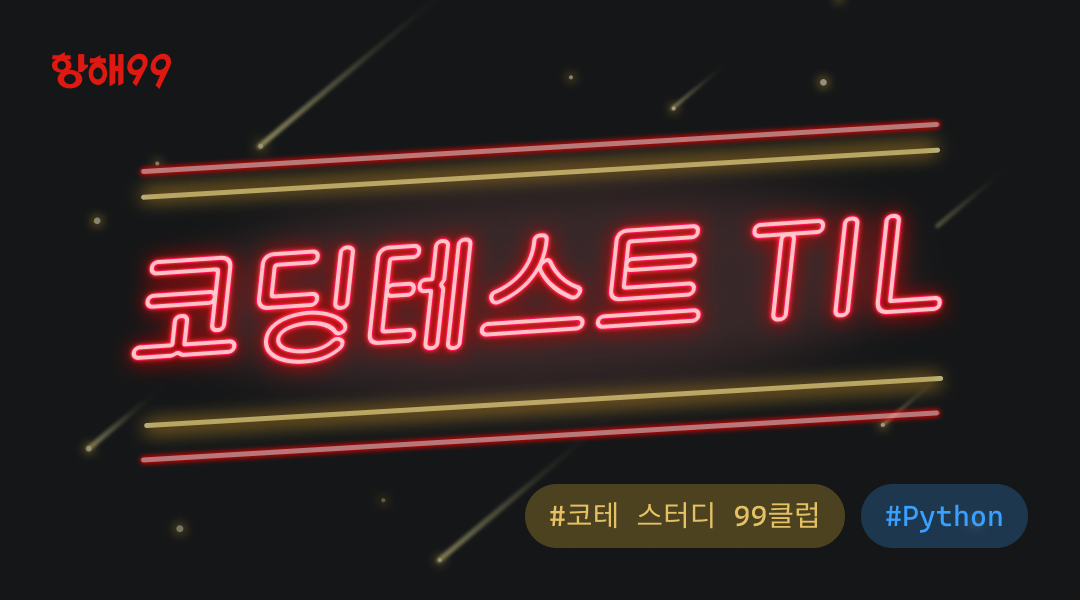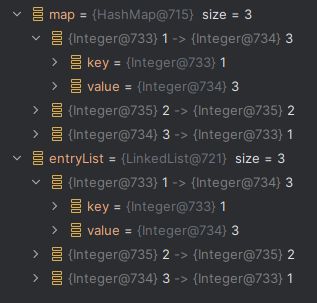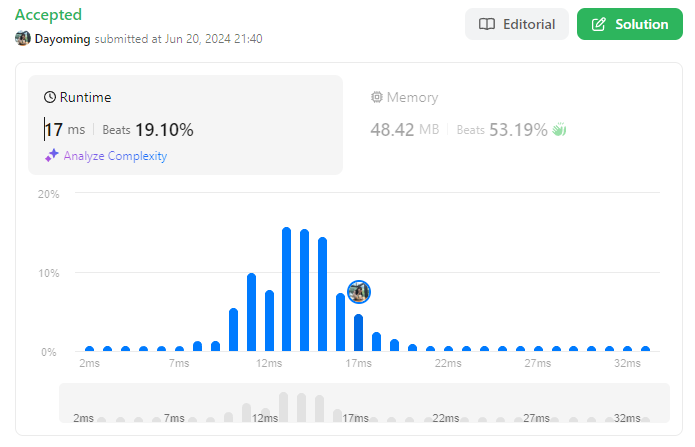[99클럽 코테 스터디 28일차 TIL] Java Map 정렬과 Top K Frequent Elements 문제 풀이
문제
Leetcode - Top K Frequent Elements 문제를 보고 풀이한 내용이다.
Given an integer array nums and an integer k, return the k most frequent elements. You may return the answer in any order.
Example 1:
Input: nums = [1,1,1,2,2,3], k = 2
Output: [1,2]
Example 2:
Input: nums = [1], k = 1
Output: [1]
풀이
배열 nums가 주어졌을 때, 해당 num의 빈도 수가 큰 순서대로 정렬한 후 k 개 만큼만 출력하는 문제이다. 내 생각에 Map을 만들어서 {num : num 의 개수} 형태로 저장하고, Map을 각 Key의 value값이 큰 순서대로 정렬한 뒤 k 만큼만 Map의 key들을 가져오면 될 것 같았다.
Map은 어떻게 정렬할까?
List나 ArrayList의 경우 이전에 풀었던 문제처럼 Comparator를 이용해 할 수 있는데, Map은 어떻게 정렬을 해야하는지 몰랐다. 그래서 찾아본 결과, Entry를 담는 List를 새로 만들어서 거기에 Map을 담은 후 정렬하면 됐다. Map은 key=value 쌍으로 이루어져 있기 때문에 원소 대신 Entry라고 불리는 값 묶음을 가지고 있고, 그걸 담아주어야 한다.
1
2
3
4
5
6
7
8
Map<Integer, Integer> map = new HashMap<>();
map.put(1, 1);
map.put(2, 2);
map.put(3, 3);
List<Map.Entry<Integer, Integer>> entryList = new LinkedList<>(map.entrySet());
// Lambda를 사용해 value가 큰 순서대로 정렬
entryList.sort((o1, o2) -> o2.getValue() - o1.getValue());
이렇게 하면 위와 같이 key-value 쌍을 가지고 있는 정렬된 리스트를 얻을 수 있다. 이제 이걸 k개 만큼만 int[] 배열에 담아주고 반환하면 된다.
정답 코드
1
2
3
4
5
6
7
8
9
10
11
12
13
14
15
16
17
18
19
20
21
22
23
24
25
26
27
28
public class Solution {
public int[] topKFrequent(int[] nums, int k) {
Map<Integer, Integer> map = new HashMap<>();
for (int num : nums) {
// 만약 map에 해당 키 값이 존재하지 않으면
if (map.get(num) == null) {
map.put(num, 1);
} else { // 해당 키 값이 존재하면 value 1 증가
map.replace(num, map.get(num) + 1);
}
}
List<Map.Entry<Integer, Integer>> entryList = new LinkedList<>(map.entrySet());
entryList.sort((o1, o2) -> o2.getValue() - o1.getValue());
int answer[] = new int[k];
int idx = 0;
for (Map.Entry<Integer, Integer> entry : entryList) {
if (idx == k) break;
answer[idx] = entry.getKey();
idx++;
}
return answer;
}
}
Map, entryList, answer 등 저장 공간을 여러 개 사용하고 있어서 Memory는 조금 비효율적으로 나왔다. 그러나 시간 복잡도는 O(n)으로 제한 조건에 무리 없이 모든 테스트 케이스를 실행시킬 수 있었다.


